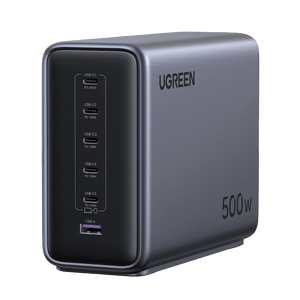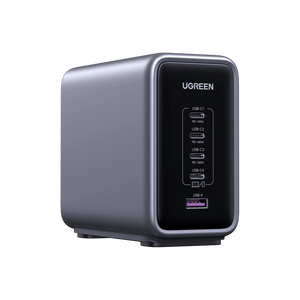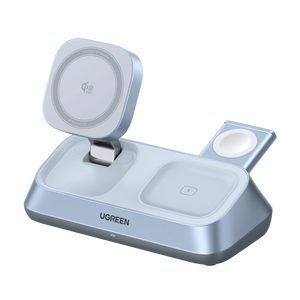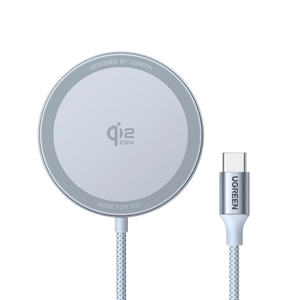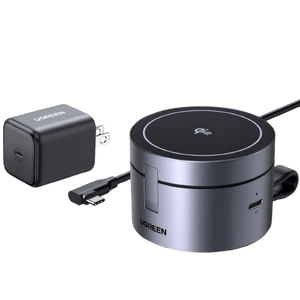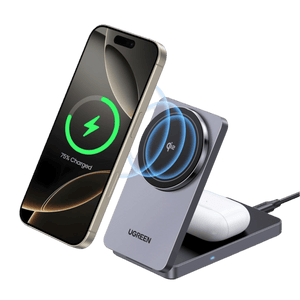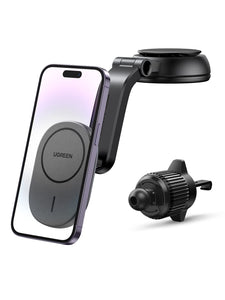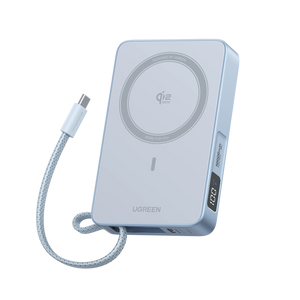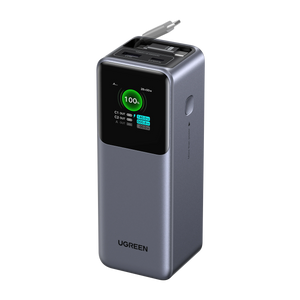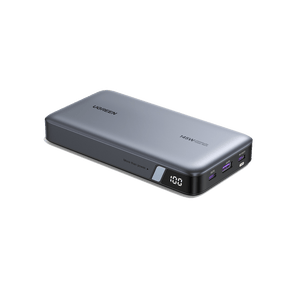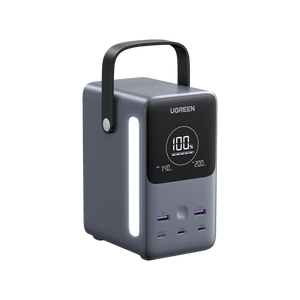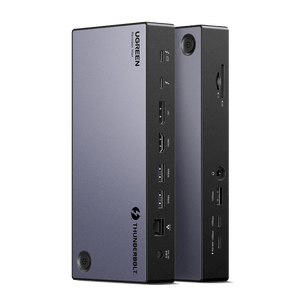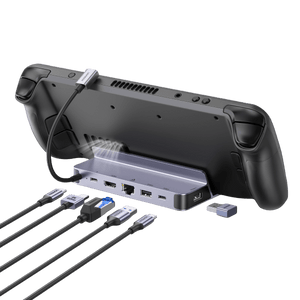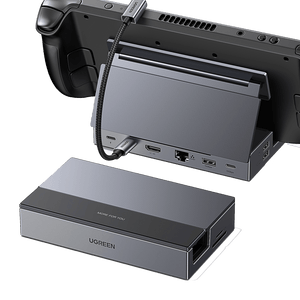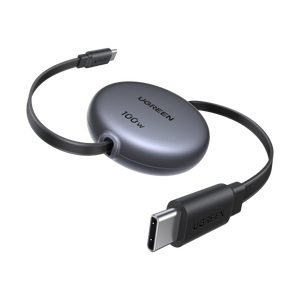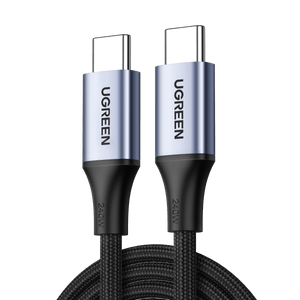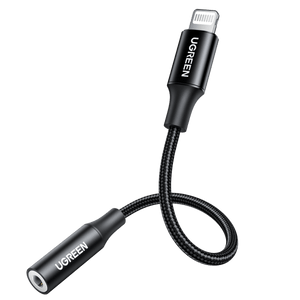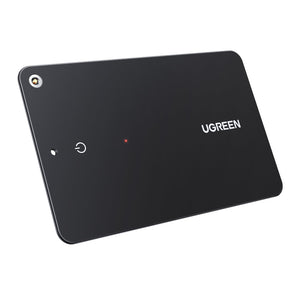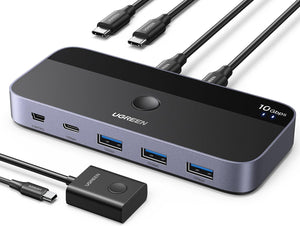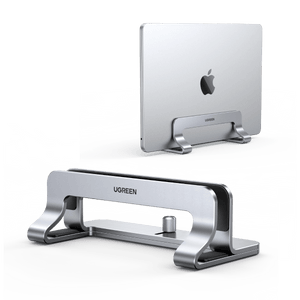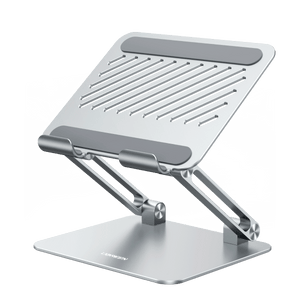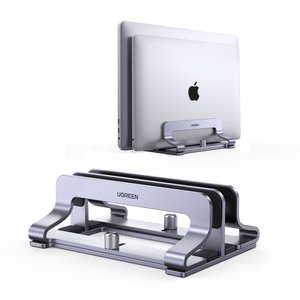Top 5 Factors for Picking the Best Laptop Docking Station in 2024
Today's high mobility planet brings together the ease of laptops with anyone on the move, whether professionally or in the pursuit of studies or work. Laptops tend to have fewer ports and connection options than desktop towers. This is a problem when you have to hook up things like monitors, hard drives, and printers, not to mention all the other accessories.
Enter the invaluable innovation of the docking station- a device that remarkably expands a laptop's capabilities. Docking stations are becoming increasingly popular due to their ability to instantly convert a laptop into a versatile workstation.
This ultimate guide will take you through everything you need to know about docking stations. Continue reading to find out what they are, their benefits, how they work, key features, and most importantly, what to look for in the right one to fit your needs and laptop setup.
Key Takeaways
- Enhanced Connectivity: Docking stations significantly expand a laptop’s port options, providing USB, HDMI, DisplayPort, Ethernet, and audio jacks to connect multiple peripherals like monitors, keyboards, and external drives.
- Simplified Workspace: With a single cable connection, docking stations streamline cable management, reduce clutter, and allow users to quickly transform any space into a fully equipped workstation.
- Versatile Functionality: They support external monitors, wired internet, power delivery for charging, and peripheral integration, making them ideal for professionals and students needing a desktop-like experience.
- Flexible Docking Options: Available in USB, Thunderbolt, and hybrid models, docking stations cater to various laptop types and user needs, with features like dual 4K display support and high-speed data transfer.
What is a Docking Station?
A docking station, alternatively called a universal port replicator, is an external hardware device acting as a connector or an interface bridge between a laptop and other desktop peripherals and devices.
In a physical sense, the docking station is an external enclosure which is stationary on your desktop. The concept behind this is that you hook your laptop into the docking station and, in return, you gain access to all of its expanded connectivity options. It is a central switchboard through which you can connect all your desktop accessories to your mobile computer. There are many different shapes and sizes of docking stations, but essentially, they all do much the same thing: they turn your laptop into a versatile desktop workstation in a matter of seconds. They do that by affording a wide array of extra ports and slots over and above what is offered on most laptops.
Here are some of the key ports and connections that a docking station will typically provide:
● USB Ports - For hooking up peripherals like external hard drives, keyboards, mice, printers
● HDMI, DisplayPort, DVI, VGA - For connecting one or more external monitors
● Ethernet Port - For wired internet connectivity
● Audio Jacks - Headphone, speaker, microphone connectivity
● SD Card Readers - For quick access to storage from media devices
● Thunderbolt - For blazing fast connections (in higher end docks)
With just a single cable connection from your laptop to a docking station, you instantly gain access to all of those extra ports for connecting peripherals. This makes it a cinch to transform any space into a full desktop workstation setup using your laptop.
Laptop Docking Station Benefits: Why You Need One
If you regularly need to use your laptop with multiple external devices like monitors, hard drives, networks, printers, cameras, and other accessories, a docking station makes your life infinitely easier and streamlined.
Here are some of the biggest benefits that a docking station provides:
● Simplified Cable Management - Just one single cable from your laptop to the dock hooks everything up, eliminating a rat's nest of wires.
● External Monitor Support - Docking stations allow you to connect one or multiple external displays to your laptop for more screen real estate.
● Wired Network Connectivity - Get consistently faster and more stable internet speeds by connecting your dock to ethernet.
● Peripheral Support - Hook up all your external gadgets like drives, cameras, microphones, printers to the dock ports.
● Power Delivery - Many modern docks include power delivery for charging your laptop via USB-C or Thunderbolt.
● Port Replication - The ports are always available on the dock even when you disconnect your laptop.
● Workspace Flexibility - Instantly convert any space into your own fully-equipped workstation by just plugging your laptop into the dock.
Professionals, students, and anyone else who has limited desk space should benefit from one of the best docking stations, which allows for a full desktop computing experience—complete with portability features of a laptop.This docking station basically gives you a constant and available bank of extra ports—just leave all your devices and peripherals plugged into them.
This eliminates the need for constant plugging and unplugging of accessories from your laptop, saves time, and ensures there is no wear and tear on your laptop's ports.These solutions also allow the workplace to be flexible for corporate and home-office employees with no pain. Employees would be able to undock their laptops and pick up right where they left off with one step when they reconnect the laptop to the docking station.
How Docking Stations Work
The way docking stations work is quite straightforward. A dock itself is simply an enclosure with a variety of ports built-in, and stays stationed on your desk. You connect the dock to a power source, external displays if you wish, and any other peripherals you regularly use.
Modern docks will connect to your laptop using either USB-C, USB 3.0, Thunderbolt 3 or 4 technology. Many also include a separate power cable to deliver charging power to your laptop.
With the dock powered on and connected to your peripherals, all you have to do is connect your laptop to the docking station using the main dock cable, which is usually USB-C or Thunderbolt. This single cable connection instantly routes access to all of the docking station's ports and peripherals back to your laptop.
The dock essentially serves as a "middleman" sitting between your laptop and your other devices. This gives you a central hub where you can hook up all your desktop gear, without having to plug and unplug many individual cables into your laptop every time you relocate.
When disconnecting your system, you simply unplug the single docking station cable from your laptop. All your peripherals stay connected to the docking station ports. Then when you return, reconnect the one docking cable, and you instantly regain access to the docking station's peripherals without having to reconnect them individually.
Think of it like a bridge or control center that enables you to easily configure an entire desktop computing environment around your laptop. Docks make it simple to transition back and forth between a mobile and stationary computing setup.
Key Features To Look For In a Docking Station
With docking stations growing tremendously in popularity, there is now an extensive variety of models and features available. When shopping for a dock, here are some of the key specifications and capabilities to look for based on your connectivity needs:

Number and Types of Ports
● More ports allow you to connect more accessories simultaneously. Look for the right mix of USB, video outputs, card readers, ethernet, etc.
Power Delivery/Charging
● Some docks can charge your laptop via high-wattage USB-C or Thunderbolt. Verify that the wattage suits your laptop's charging speed.
Display Support
● Look for the right video outputs to match your external monitor setup, such as HDMI, DisplayPort, etc. Some docks support dual 4K displays.
Networking
● Having an ethernet port allows for fast wired connectivity. Some models may also include Wi-Fi connectivity.
Audio Support
● Check for 3.5mm audio jacks, or better yet, high-quality digital audio ports.
Device Compatibility
● Make sure the docking station is designed to work with your laptop's ports and operating system. Watch out for compatibility issues.
Design and Size
● Desktop footprint, vertical vs. horizontal orientation, cable management, and aesthetics may be considerations for your workspace setup.
As you can see, docking stations now come loaded with all types of advanced features and capabilities far beyond just port expansion. Be sure to choose one tailored to your specific connectivity needs. Also consider your budget, as prices range quite significantly based on functionality.
Key Types of Laptop Docking Stations
There are a few fundamental types of docking stations designed for different kinds of laptop setups. Being aware of these major categories will help you find your ideal match.
USB Docking Stations
USB is the most ubiquitous laptop connector type, making USB docks widely compatible. They connect to your laptop via USB 3.0 or USB-C, providing accelerated data transfer speeds compared to older USB 2.0 docks. Higher-end USB-C models may support 4K video output and power delivery charging up to 100W.
Thunderbolt Docking Stations
Thunderbolt docks use Intel's super fast Thunderbolt 3 or 4 technology, capable of blazing 40Gbps transfer speeds. This allows support for dual 4K displays and laptop charging up to 100W. However, they are the most expensive type of dock, and require a compatible Thunderbolt laptop.
Hybrid Docking Stations
Hybrid docking stations aim to provide the best of both worlds by including multiple connectivity options such as USB, USB-C, Thunderbolt, and sometimes proprietary connectors to ensure broad laptop compatibility. However, they are usually among the priciest models.
Standalone vs. Port Replicators
Standalone docks have onboard processing capabilities, enabling advanced functionality like video conversion. Port replicators simply provide port expansion and have no independent processing power of their own.

Considering Your Specific Docking Station Needs
With the right docking station, you can massively boost your laptop productivity by creating a versatile workstation environment tailored to your needs. Here are some key factors to consider while shopping for the right dock:
Workspace Setup Considerations
First, analyze your workspace situation. How much desk space do you have to accommodate a dock? Do you need a permanent desktop setup, or something you can pack up and move around easily? Consider your monitor setup - single or dual monitors? Will the dock be positioned vertically or horizontally? These are key considerations that will help narrow your dock selection.
Laptop Compatibility
Make sure to choose a dock designed specifically for your laptop's ports, connector types, and operating system. MacBook users would want to look for Thunderbolt docks, while USB-C and USB 3.0 models offer wider compatibility for Windows laptops. Always check compatibility to avoid issues.
Port Requirements
Carefully evaluate what ports and connections you require. The whole point of a dock is convenient access to ports, so make sure it has the ones you need such as USB, HDMI, SD card slots, networking, etc. More ports means connecting more devices simultaneously.
Power Delivery
If you want your dock to charge your laptop, look for models with USB-C or Thunderbolt power delivery. Make sure the wattage output matches your laptop's charging capability. Power delivery also benefits higher-powered accessories.
External Display Support
Those looking to connect one or more external monitors should look for docks with video output ports like HDMI, DisplayPort, DVI, or VGA. Some Thunderbolt and USB-C docks can support dual high-resolution 4K displays for optimal productivity.
Wired Networking
Docks with a Gigabit ethernet port allow fast and stable wired internet connectivity vs. WiFi. This is especially useful in office settings. Make sure the dock has enough USB ports for any peripherals displaced by using the ethernet.
Audio Capabilities
Check what kind of audio ports the dock provides if sound output is important. Basic docks have 3.5mm stereo jacks, while more advanced models may have SPDIF digital audio support for studio-quality sound.
Other Specialized Ports
Look for specific ports like SD/microSD card readers for media access, SATA ports to connect internal drives, and legacy ports like VGA if you need to connect older peripherals and devices.
Design and Footprint
Consider the dimensions, layout, orientation options (horizontal vs. vertical), and aesthetics of the dock to properly fit your desk setup. Minimalists may prefer compact lower profile designs with good cable management.
By carefully evaluating your connectivity needs, laptop model, and work environment, you can find the ideal docking station to maximize your productivity. With so many options available, choose wisely!




